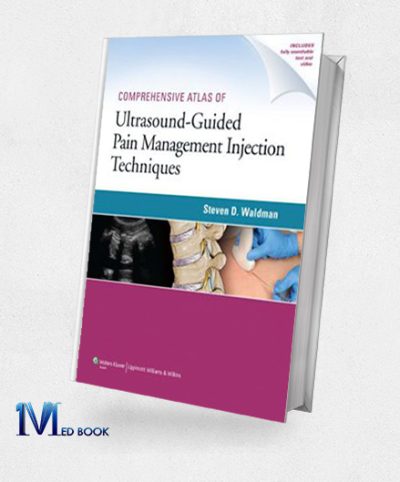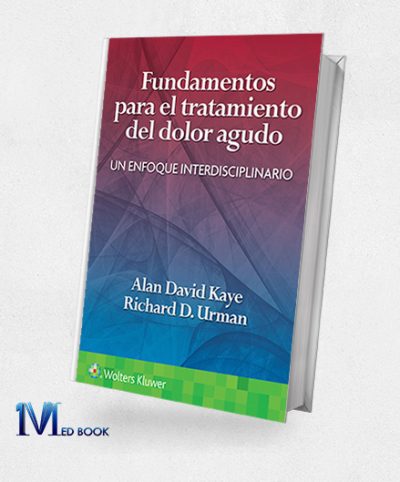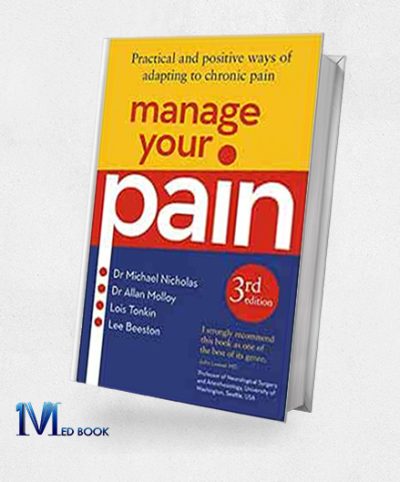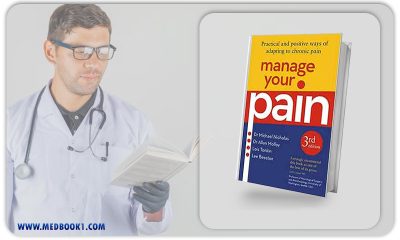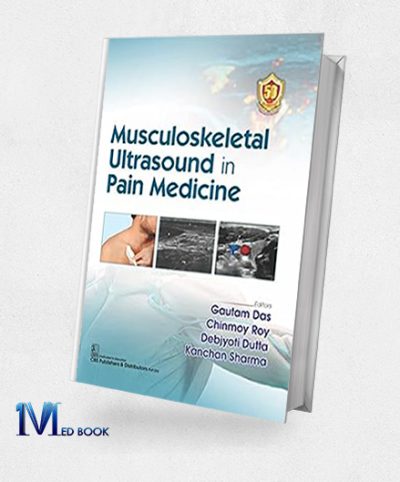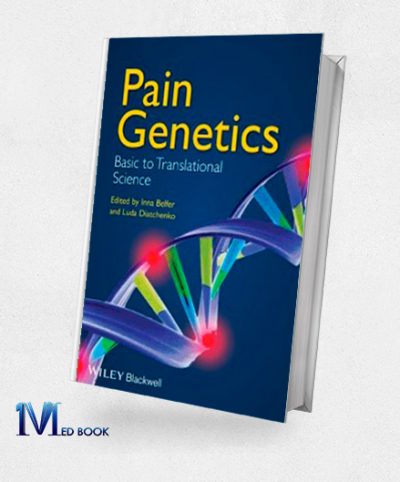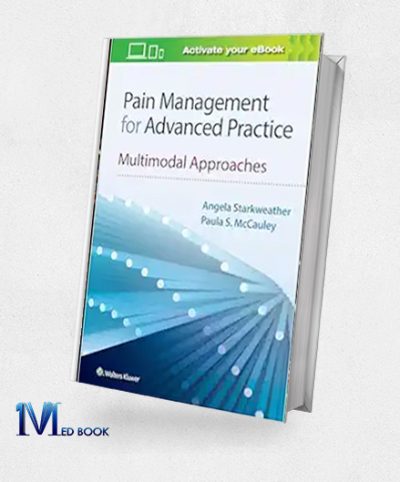Pain Medicine
Comprehensive Atlas Of Ultrasound Guided Pain Management Injection Techniques (ORIGINAL PDF from Publisher)
Original price was: $231.76.$27.00Current price is: $27.00.Fundamentos para el tratamiento del dolor agudo Un enfoque interdisciplinario (EPUB)
Original price was: $129.99.$35.00Current price is: $35.00.Manage Your Pain Practical And Positive Ways Of Adapting To Chronic Pain, 3rd Edition (AZW3 + EPUB + Converted PDF)
Original price was: $50.61.$28.00Current price is: $28.00.Musculoskeletal Ultrasound In Pain Medicine (Original PDF From Publisher)
Original price was: $44.99.$30.00Current price is: $30.00.Pain A textbook for health professionals 3rd edition (Original PDF from Publisher)
Original price was: $71.00.$40.00Current price is: $40.00.Pain Genetics Basic to Translational Science
Original price was: $123.70.$22.00Current price is: $22.00.Pain Management For Advanced Practice: Multimodal Approaches (EPub+Converted PDF)
Original price was: $94.99.$38.00Current price is: $38.00.Pain Medicine
1. Introduction to Pain Medicine:
Pain Medicine emerges as a critical and compassionate field within healthcare, dedicated to delving into the intricate tapestry of pain, a pervasive and complex human experience. Pain, as a universal phenomenon, transcends the boundaries of physicality, weaving its tendrils into the emotional and psychological fabric of individuals.
Its implications are profound, shaping not only the sensory realm but also influencing mental and emotional well-being. In recognizing the pervasive impact of pain, Pain Medicine assumes the role of a compassionate guide, offering nuanced avenues to understand, alleviate, and ultimately transform the experience of suffering. It stands as a beacon of relief, a testament to the dedication of healthcare professionals committed to improving the quality of life and promoting overall well-being.
2. Understanding Pain Mechanisms:
The mechanisms orchestrating the symphony of pain are intricate, revealing a profound interplay between physiological and psychological dimensions. In the realm of Pain Medicine, pain transcends a mere sensation; it is a dynamic convergence of neurobiological processes that intricately modulate the perception of pain signals. These processes, spanning the intricate networks of the nervous system, form the complex web through which pain manifests and evolves.
The dichotomy between acute and chronic pain further accentuates the multifaceted nature of this phenomenon. Acute pain, often a response to injury or illness, serves as a warning signal, prompting protective responses. Conversely, chronic pain, persisting beyond the expected healing time, transforms pain into a complex entity with deep-reaching implications for an individual’s quality of life.
Understanding the intricate mechanisms of pain is paramount in Pain Medicine, serving as the foundation for tailoring interventions that address pain at its root. It requires a holistic approach that considers not only the physical aspects but also the intricate interplay of psychological, emotional, and social factors that contribute to the pain experience. Through this understanding, healthcare professionals in Pain Medicine craft personalized and effective interventions, striving to alleviate suffering and enhance the overall well-being of individuals experiencing pain.
In the subsequent sections, we delve deeper into the methodologies employed in Pain Medicine, exploring pain assessment, pharmacological and non-pharmacological interventions, and the multifaceted challenges associated with chronic pain management.
3. Pain Assessment and Diagnosis:
Pain assessment and diagnosis stand as the linchpin of effective Pain Medicine practice, representing the critical nexus where healthcare professionals unravel the intricate tapestry of individual pain experiences. This foundational process goes beyond the surface, delving into the depths of each patient’s unique encounter with pain. It is an artful synthesis of tools, methods, and compassionate inquiry that seeks to decipher the nuanced language of pain, paving the way for targeted interventions that address its root causes.
In the realm of Pain Medicine, a thorough pain assessment is akin to crafting a narrative—a narrative that provides essential context for a comprehensive understanding of pain. It involves not only decoding the physiological manifestations but also delving into the psychosocial dimensions that shape an individual’s pain experience. Questions about the onset, duration, and quality of pain are complemented by inquiries into the emotional impact, lifestyle factors, and the patient’s overall well-being. This holistic approach recognizes that pain is a multifaceted phenomenon, and its assessment must transcend the confines of a checklist.
Diagnostic imaging emerges as a technological ally in the quest for a precise and thorough understanding of pain. It plays a pivotal role in unraveling the underlying causes of pain, providing a visual roadmap that guides healthcare professionals toward accurate diagnoses. Whether through X-rays, MRIs, or other advanced imaging modalities, these tools offer invaluable insights into the structural and functional aspects of the body, contributing to a more nuanced comprehension of the pain’s origin. Armed with this knowledge, healthcare professionals can tailor treatment plans that directly address the root causes of pain, promoting more effective and sustainable outcomes.
The marriage of compassionate inquiry, psychosocial assessment, and diagnostic imaging forms the backbone of pain diagnosis in Pain Medicine. It is a collaborative and patient-centered process that acknowledges the individuality of each pain experience, steering away from one-size-fits-all approaches. As the diagnostic journey unfolds, healthcare professionals gain not only a clearer understanding of the pain but also a deeper insight into the unique narrative of each patient, empowering them to formulate targeted and personalized strategies for pain management.
4. Pharmacological Approaches to Pain Management:
In the vast landscape of Pain Medicine, pharmacological approaches represent a spectrum of interventions, each carefully chosen to navigate the complex terrain of pain. From analgesic medications to opioids, nonsteroidal anti-inflammatory drugs (NSAIDs), and adjuvant medications, this arsenal provides healthcare professionals with a diverse toolkit to address the diverse manifestations of pain. However, the administration of these medications is not a mere science; it is an art that demands a delicate balance, ensuring optimal pain relief while minimizing potential risks.
Analgesic medications, encompassing over-the-counter pain relievers and prescription-strength options, serve as the frontline warriors in providing relief from mild to moderate pain. NSAIDs, with their anti-inflammatory properties, target pain associated with inflammation, offering a specialized approach. Opioids, powerful pain-relieving agents, are reserved for severe pain but demand judicious use due to the potential for dependence and other adverse effects.
The artistry in pharmacological approaches lies in the consideration of personalized and balanced pain medication regimens. Recognizing that pain experiences are as unique as the individuals who endure them, healthcare professionals tailor treatments to the specific needs and sensitivities of each patient. The commitment to personalized care extends beyond the prescription pad, delving into discussions about potential side effects, risks, and the establishment of realistic expectations for pain relief.
Balancing pain relief with the potential risks associated with certain medications demands a keen understanding of both the physiological and psychosocial aspects of pain. It requires ongoing communication between healthcare professionals and patients, fostering a collaborative relationship where shared decision-making becomes integral to the therapeutic process. This commitment to tailoring treatments reflects the essence of personalized medicine in Pain Medicine, acknowledging that effective pain management is not a one-size-fits-all endeavor.
As the journey through Pain Medicine continues, the integration of pharmacological approaches with other modalities, such as non-pharmacological interventions and psychological support, becomes crucial. The artful orchestration of these diverse approaches ensures a comprehensive and holistic strategy that addresses pain from multiple angles. This integrated approach not only enhances the efficacy of pain management but also aligns with the overarching goal of promoting the overall well-being of individuals experiencing pain.
5. Non-Pharmacological Pain Interventions:
In the dynamic landscape of Pain Medicine, where the goal is not just alleviating pain but enhancing overall well-being, non-pharmacological interventions emerge as essential components of a holistic approach. These interventions complement pharmacological strategies, embracing a perspective that recognizes the multidimensional nature of pain. Physical therapy, acupuncture, cognitive-behavioral therapy (CBT), and interventional procedures stand as pillars in the comprehensive management of pain, offering patients a diverse toolkit to navigate and manage their unique pain experiences.
Physical Therapy: Physical therapy serves as a cornerstone in the non-pharmacological armamentarium against pain. It goes beyond mere exercise regimens; it involves targeted interventions to improve mobility, strengthen muscles, and enhance overall physical function. Physical therapists work collaboratively with patients, devising customized plans that address specific pain-related challenges. Through exercises, stretches, and manual techniques, physical therapy not only aids in pain relief but also contributes to long-term functional improvement.
Acupuncture: Rooted in traditional Chinese medicine, acupuncture has gained recognition as an effective non-pharmacological intervention for pain management. This technique involves the insertion of thin needles into specific points on the body, aiming to modulate the flow of energy (Qi). In the context of Pain Medicine, acupuncture is often employed to alleviate pain associated with various conditions, including musculoskeletal disorders and chronic headaches. Its holistic approach aligns with the overarching goal of balancing the body’s energy to promote wellness.
Cognitive-Behavioral Therapy (CBT):
Recognizing the intricate interplay between the mind and pain perception, cognitive-behavioral therapy (CBT) offers a psychological lens in pain management. CBT equips individuals with coping mechanisms, helping them reframe negative thought patterns and develop strategies to manage pain-related stress and anxiety. By addressing the emotional and psychological aspects of pain, CBT becomes a powerful tool in empowering patients to exert control over their pain experience and improve their overall quality of life.
Interventional Procedures: Interventional procedures represent a specialized domain within non-pharmacological interventions, involving targeted techniques to alleviate pain at its source. These procedures may include nerve blocks, epidural injections, or radiofrequency ablation, aiming to disrupt pain signals or reduce inflammation. Interventional approaches are often employed in cases where other treatments may be less effective, offering a targeted and minimally invasive alternative to manage specific types of pain.
The integration of these non-pharmacological interventions into Pain Medicine reflects a commitment to a comprehensive and patient-centered approach. It acknowledges that pain is not solely a sensory experience but a complex interplay of physical, emotional, and psychological factors. By offering a diverse toolkit, healthcare professionals empower patients to actively participate in their pain management, fostering a sense of control and promoting overall well-being.
6. Challenges in Chronic Pain Management:
Chronic pain, enduring beyond the expected healing time, poses formidable challenges within the realm of Pain Medicine. The intricate relationship between chronic pain and mental health, coupled with the specter of opioid misuse, demands a nuanced and multidisciplinary approach. Healthcare professionals navigate these challenges with resilience, recognizing the complex nature of chronic pain conditions and striving to enhance the quality of life for individuals facing these persistent challenges.
Opioid Misuse:
One of the significant challenges in chronic pain management revolves around the potential for opioid misuse. Opioids, while powerful in providing pain relief, carry the risk of dependency, tolerance, and addiction. Healthcare professionals in Pain Medicine must tread carefully, balancing the imperative to alleviate suffering with the need to mitigate the potential risks associated with opioid medications. Strategies such as patient education, close monitoring, and the exploration of alternative pain management modalities become pivotal in mitigating the risks of opioid misuse.
Complex Relationship with Mental Health:
Chronic pain and mental health share a symbiotic relationship, each influencing and exacerbating the other. Individuals experiencing chronic pain often grapple with heightened levels of stress, anxiety, and depression. Conversely, mental health conditions can amplify the perception and impact of pain. Recognizing and addressing this intricate interplay becomes crucial in comprehensive chronic pain management. Integrated care models, where mental health professionals collaborate with Pain Medicine specialists, provide a holistic approach that acknowledges the interconnectedness of physical and mental well-being.
Multidisciplinary Approach:
The multifaceted nature of chronic pain necessitates a multidisciplinary approach. No single intervention or specialty can comprehensively address the complexities associated with chronic pain conditions. Pain Medicine practitioners collaborate with a spectrum of healthcare professionals, including physical therapists, psychologists, pain specialists, and primary care physicians, to formulate comprehensive treatment plans. This collaborative effort aims not only to manage pain but also to improve overall functioning and enhance the quality of life for individuals facing chronic pain challenges.
Patient-Centered Care:
In navigating the challenges of chronic pain management, a patient-centered care approach becomes paramount. Recognizing that chronic pain is a unique and individualized experience, healthcare professionals engage patients in shared decision-making processes. This involves not only tailoring treatment plans to the specific needs and preferences of each patient but also fostering open communication and trust. Patients become active partners in their care, contributing to the development of realistic goals and expectations.
As Pain Medicine continues to evolve, the challenges in chronic pain management underscore the need for ongoing research, innovative interventions, and a commitment to personalized and holistic care. By addressing the intricate relationship between chronic pain, mental health, and potential opioid misuse, healthcare professionals in Pain Medicine strive to improve outcomes, enhance the overall well-being of individuals facing chronic pain, and pave the way for a more comprehensive understanding and management of these complex conditions.
7. Palliative Care and End-of-Life Pain Management:
In the sensitive domain of palliative care and end-of-life pain management, Pain Medicine specialists play a pivotal role. Their expertise extends beyond pain relief to providing comfort and symptom relief for individuals with life-limiting illnesses. Ethical considerations guide their practice, emphasizing compassionate care and dignity at the end of life. Pain Medicine becomes a beacon of support, ensuring that individuals facing life-limiting illnesses can find solace in their final journey.
8. Pediatric Pain Medicine:
Pediatric Pain Medicine delves into the unique considerations surrounding pain assessment and management in children. Beyond the physiological aspects, the role of parents and caregivers becomes integral in the holistic care of pediatric patients. The importance of age-appropriate interventions underscores the commitment to tailoring treatments to the developmental stages of children, ensuring their well-being and comfort.
- Integrative Medicine in Pain Management:
Integrative Medicine emerges as a harmonious marriage of conventional and complementary approaches in Pain Medicine. Mindfulness, yoga, and herbal remedies, among other therapies, weave into conventional pain management strategies, offering a holistic and patient-centered approach. The incorporation of these complementary therapies reflects a commitment to enhancing the overall well-being of individuals experiencing pain.
10. Pain Medicine Research and Innovations:
Pain Medicine is a dynamic field propelled by research and innovation. Advancements in pain neuroscience, emerging treatments, and the integration of technology in pain assessment and management herald a future where patient outcomes are continually improved. The relentless pursuit of knowledge underscores the commitment to pushing the boundaries of Pain Medicine, offering hope and relief to individuals grappling with pain.
11. Cultural Considerations in Pain Medicine:
In the mosaic of cultural considerations within Pain Medicine, the influence of cultural beliefs and practices on pain perception becomes evident. Culturally sensitive care becomes a touchstone, recognizing and respecting the diversity that shapes individual experiences of pain. Strategies to address disparities in pain management among diverse patient populations reflect the commitment to equitable and inclusive healthcare practices.
12. Ethical Dilemmas in Pain Medicine:
The ethical landscape of Pain Medicine unfolds against a backdrop of intricate dilemmas, each requiring careful navigation from pain medication prescribing to end-of-life decisions. Within this dynamic field, healthcare professionals grapple with the delicate task of striking a balance between providing effective pain relief and mitigating potential risks. Ethical decision-making in Pain Medicine demands a level of consideration and nuance that goes beyond the routine practice of medicine. It is an endeavor that places the well-being and dignity of individuals experiencing pain at the forefront, requiring practitioners to navigate the complexities with the utmost care.
In the realm of pain medication prescribing, ethical considerations loom large. Balancing the imperative to alleviate suffering with the potential risks of opioid medications poses a formidable challenge. Pain Medicine practitioners must weigh the benefits of pain relief against the risk of dependency, misuse, and other adverse effects associated with certain medications. The ethical compass guiding this decision-making process is rooted in a commitment to the principle of beneficence, ensuring that the chosen course of action maximizes the overall well-being of the patient.
End-of-life decisions introduce another layer of ethical complexity into the landscape of Pain Medicine. When faced with terminal illnesses or debilitating conditions, healthcare professionals must navigate discussions surrounding the appropriate level of pain management in the context of limited life expectancy. The principle of autonomy becomes paramount, respecting the individual’s right to make decisions about their care. Concurrently, the ethical duty to provide compassionate care calls for a nuanced approach, ensuring that pain relief remains a priority even in the face of challenging end-of-life decisions.
Every ethical dilemma within Pain Medicine underscores the profound responsibility borne by practitioners. The decisions made in these complex scenarios not only influence the immediate course of pain management but also shape the overall experience of individuals facing pain. Upholding the principles of beneficence, autonomy, and justice, Pain Medicine practitioners navigate these ethical crossroads with a commitment to preserving the dignity and well-being of those under their care.
13. Conclusion:
In conclusion, Pain Medicine stands as a dynamic and compassionate field, where the synthesis of diverse approaches aims to enhance the quality of life for individuals grappling with pain. The collaborative efforts among healthcare professionals propel the continual advancement of Pain Medicine, ensuring that innovative strategies and compassionate care remain steadfastly at the forefront of the field.
The ongoing commitment to improving pain management strategies is a testament to the dedication within Pain Medicine. It reflects a deep-rooted resolve to alleviate suffering and promote the overall well-being of those touched by pain. The multifaceted nature of Pain Medicine demands an integrated and holistic approach, acknowledging not only the physiological aspects of pain but also the intricate interplay of psychological, emotional, and social factors.
As the field evolves, fueled by research, innovation, and the tireless commitment of healthcare professionals, the trajectory of Pain Medicine points toward a future where individuals experiencing pain can find solace and relief. The journey is one marked by empathy, ethical considerations, and a continuous quest for improved methodologies. In this dynamic landscape, Pain Medicine remains a beacon of hope, offering compassionate care and innovative solutions to enhance the lives of individuals navigating the complex terrain of pain.

